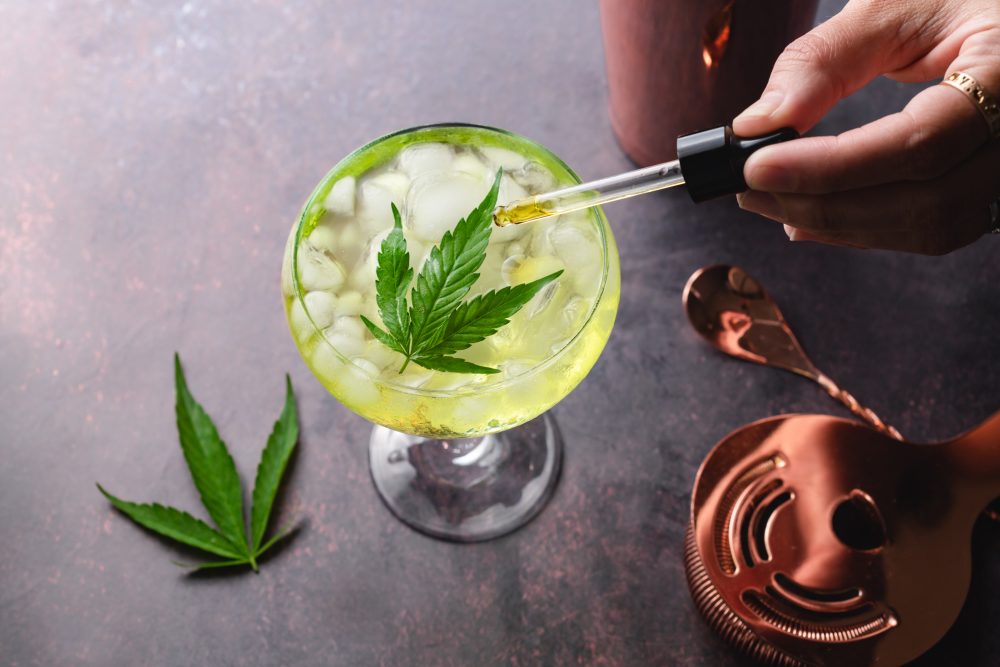Inspiring innovations and insurmountable issues are competing for headlines, making the power of wonder more resonant than ever.
The THC Takeover
As marijuana continues to become more mainstream with accelerated legalization and record-breaking sales, it’s high time for brands to pay attention to this space. Marijuana’s influence is rapidly reaching beyond stoners, slackers, and chronic sufferers, and is infiltrating business categories from food to fashion, leading to evolving perceptions and attitudes around the once-taboo substance.
The key factor driving marijuana’s mainstreaming is the expanded recreational legalization (vs. medicinal), which now allows brands to capitalize on THC, the key psychoactive compound that provides users with the signature euphoric sensation, or “high,” and not just CBD, the component that provides a calm and relaxing sensation and is derived from hemp plants. As of today, 19 states have legalized the recreational use of marijuana, eight of these states in the past two years alone. The legalization of recreational marijuana opens a door for new outlets of consumption and enjoyment, and the demand is overwhelming.
By 2025, the value of the legal marijuana market is predicted to exceed $50 billion according to New Frontier Data, an opportunity to drive creativity and innovation – and reflecting a larger trend we call CTRL + ALT + CREATE, defined by an impulse to evolve, driven by inspired creations, alternative methods, and “better for you” innovations that pave the way for a brighter future, embracing values of innovation, evolution, originality, and surprise.
During this boom, two audiences stand out as potential drivers of this evolving marketplace. First, young adults appear to be taking a keen interest in marijuana as a form of wellness. Last May, 56% of adults 18-34 claimed to incorporate plant medicines such as marijuana into their self-care regimens, a 75% lift from one year prior.* Next, an emerging audience of those “canna-curious,” or previously unengaged with marijuana, offers brands a new set of preferences beyond wellness to consider when creating and positioning their products. Both audiences are likely to be allured as the market is flooded with diverse product types that have the potential to evoke pleasure, create community, and invite new methods of participation.
One emerging outlet for THC consumption is in the form of beverages. MXXM offers THC-infused spirits inspired by gin, tequila, and bourbon, that can act as alternatives to hard liquor. For those that enjoy beer and malt beverages, Kaló recently introduced new THC-infused seltzers in flavors such as lemon-lavender and pomegranate-peach following the success of their hemp-infused drink line. As the growth of THC beverages continues, these products have the potential to contend as substitutes for alcohol by offering a new sensation that differs from an alcohol-induced buzz. One study conducted during the pandemic found that college students in particular are consuming record highs of marijuana that are simultaneous with record lows of binge drinking. Many students are craving the sensation of marijuana over alcohol, a promising signal for cannabis beverage brands.
Turning to fashion, Juicy Couture co-founder, Gela Nash-Taylor, recently launched Potent Goods, a lifestyle brand that offers products for marijuana consumption paired with luxury loungewear such as robes, lounge pants, and windbreakers. This expansion into fashion spotlights a new outlet of expression that does not require consumption. Similarly, when renowned handbag designer Brett Heyman explored new possibilities for her brand, she also looked to cannabis. The brand features an expanded product range including high-end marijuana-centric clothing, accessories, handbags, and more. In an interview regarding the evolvement, Heyman expressed that attention to marijuana will continue to grow as more states legalize it, and the actions of brands will matter.
Given that the U.S. could see marijuana legalized in over 50% of states as early as 2022, now is the time for brands to start exploring how they can partake in the THC takeover. Whether through the use of THC in consumable products or aligning with people’s desire for unique experiences, a sense of community, or improved wellbeing, there are three standout routes that brands can take to explore this space:
Join the Conversation
By talking about marijuana, brands can help destigmatize the already-shifting attitudes around marijuana. Brands can incorporate this changing conversation into new projects, giving people a space to explore and entertain the idea of marijuana/THC without consumption.
Use the Values
This approach consists of brands capitalizing on values that overlap with those embraced by THC-products. Elements of relaxation, exploration, community, and self-discovery can be intertwined with products, services, packaging, and marketing initiatives.
Embrace the Experience
This final route for navigating this landscape encourages brands to center their initiatives around the experience that mimics one people are seeking from marijuana/THC. Focusing on the human senses and exploring tactile sensations can achieve this.
Brands who integrate these themes throughout their products or marketing can experience the “high” of the THC takeover.
Source: *Horizon Media, Finger on the Pulse. Survey fielded 4/27/21-5/4/21, n=857




